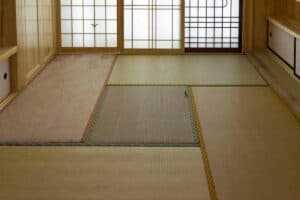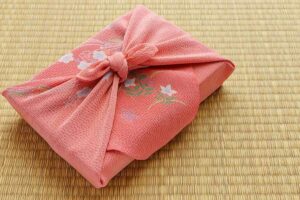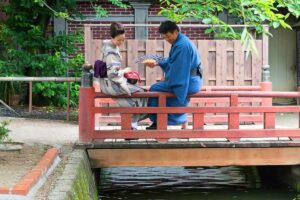One of the most well-known things about Japanese culture is their tradition to sit on the floor for meals.
Although many Japanese homes have now adopted Western-style tables and chairs, you’ll still find the traditional low-level tables popular.
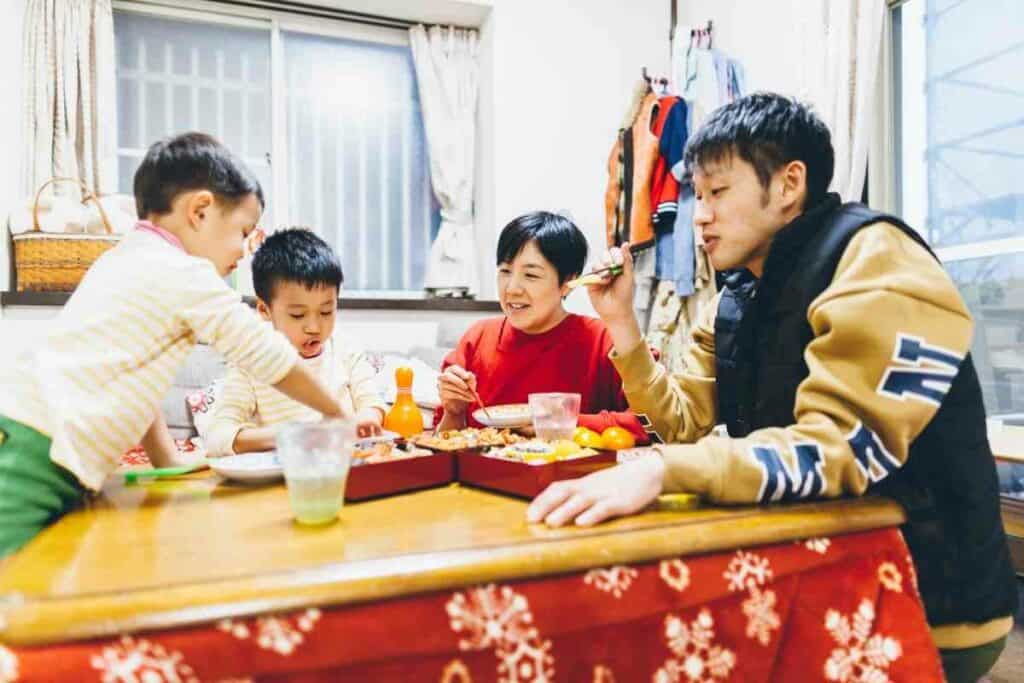
It’s not just the West that’s influencing Japan; the same could be said the other way too.
Many Western homes are now incorporating Japanese tables or Japanese-style tables into their homes.
In This Article – We’ll explore everything there is to know about Japanese tables – the different types, their style, and their history. Firstly, let’s take a look at why Japanese people sit at low tables.
Table of Contents
Japanese tables and dining history
The Japanese custom of eating while seated on the floor is said to have originated through the Shinto religion.
There was a belief that kami (spirits) inhabited everything. Because of this, people would show respect to the spirits.
When it came to eating, people believed that they would please the spirits that inhabited the tatami mats if they used them for eating.
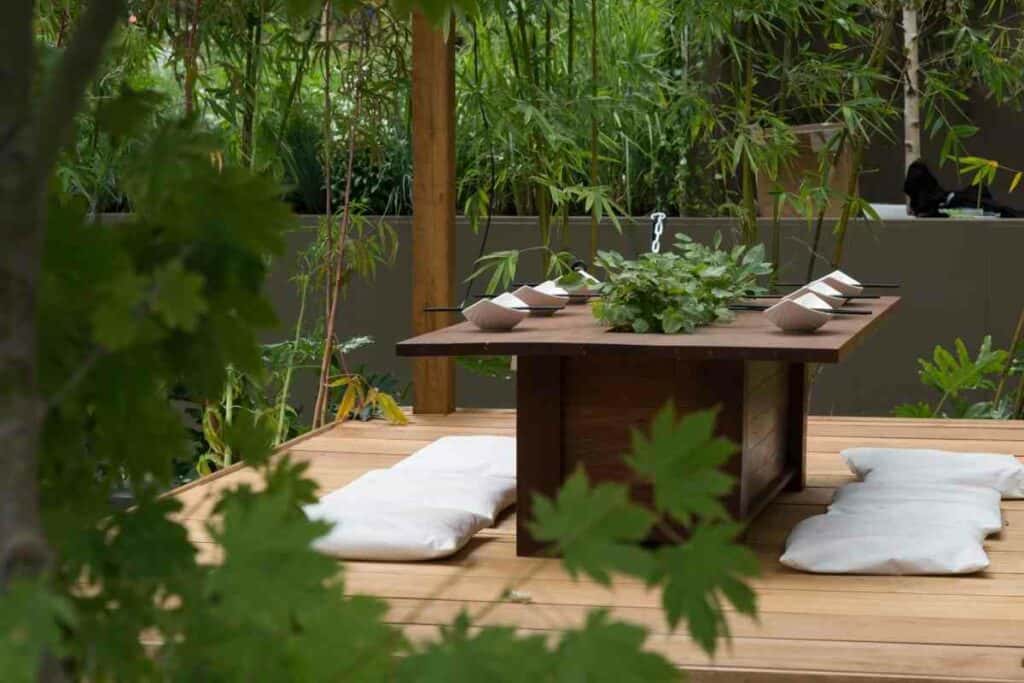
This belief meant that sitting on tatami for eating became a custom.
They’d use zabuton or shikibuton (a traditional Japanese mattress that’s around 3-4 inches thick) to sit and a kotatsu table.
As the Japanese are immensely proud of their culture, they’ve been keen to keep this custom over the years.
Also, because they often don’t have a lot of space, dining in this way is a space-saving technique.
Booking.comThe different types of Japanese tables in the home
There are lots of different Japanese tables and most are low.
In restaurants, you’ll often be seated in this way – especially if it is a traditional Japanese restaurant.
If you are seated at a table on tatami mats, you’ll be required to remove your shoes before you step onto the mat.
However, many Japanese restaurants now have multiple styles of table to suit their customers’ individual likes.
Here are some different styles of Japanese tables:
Chabudai
These tables have short legs.
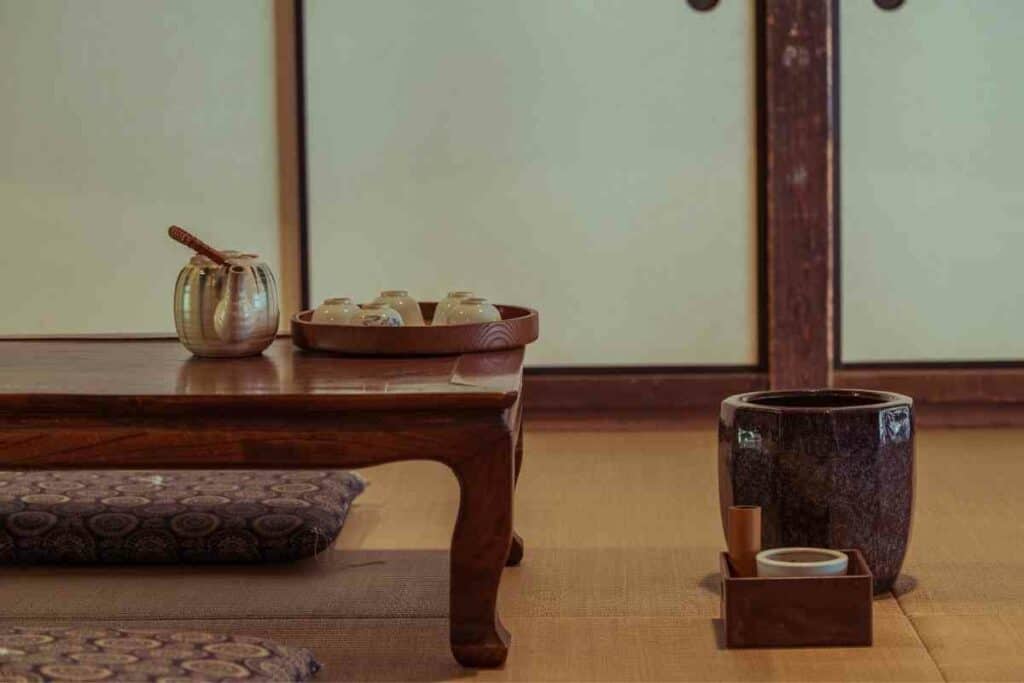
They’re used when sitting on the floor and are most often placed on a tatami floor. You still might see them on a hard floor too.
Families who use a chabudai table, will often use a zabuton to sit on. This is a thin pillow or cushion, which is their equivalent to a chair.
Original chabudai tables would be between 15 cm and 30 cm high. Usually, they would have four collapsible legs for easy storage and movement.
These Japanese tables aren’t just used as dining tables. You might use one as a workbench or study table.
If the family has a kotatsu table too (more on this below), this would usually come out during colder weather, with the chabudai being used in the warmer months.
There is a saying in Japan “chabudai gaeshi,” this means “to flip the chabudai.”
Essentially – It describes being so angry or frustrated that you flip a chabudai over. The expression can also be used in a figurative sense to describe an outburst.
Kotatsu
Like chabudai, kotatsu are low-level tables.
The reason these are often brought out in winter is because they have an in-built electric heater underneath.
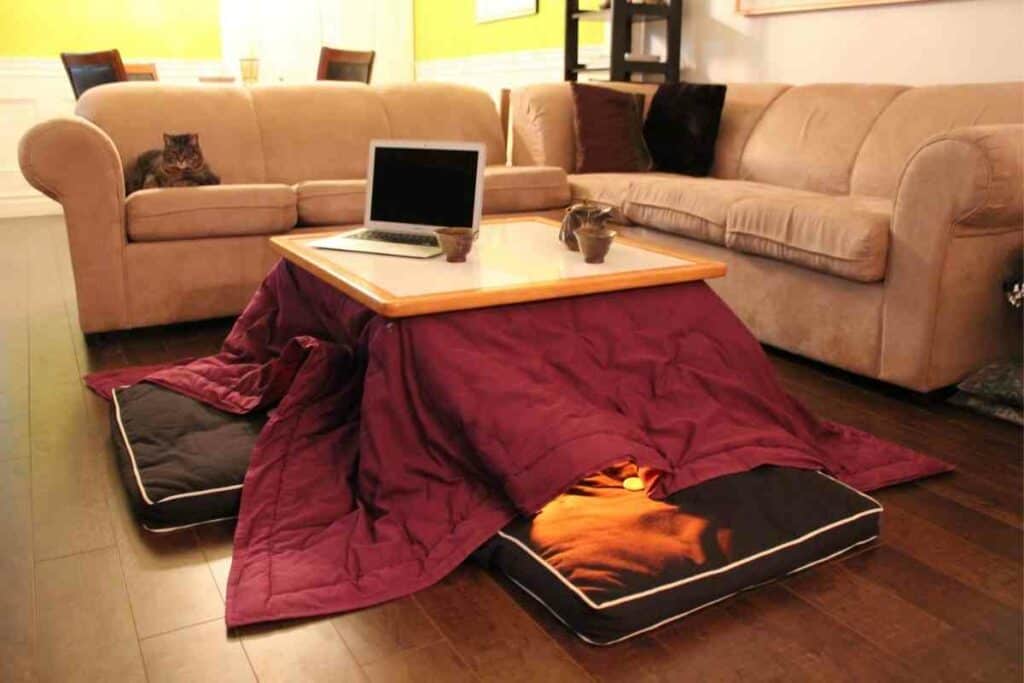
People will sit with their legs underneath the kotatsu and the heavy blanket covering the table will keep the heat in.
A kotatsu table is used for eating, studying, or even watching TV.
Most Japanese regions don’t have central heating in their homes so you can imagine just how popular a Komatsu will be.
Kotatsu history
Kotatsu tables are almost exclusive to Japan but there are similar things like the korsi in Iran or the brasero in Spain.
The first kotatsu tables came about during the 14th century and the Ashikaga shogunate or Muromachi period.
Originally, it was part of a cooking hearth called an irori and charcoal would be used for both heating and cooking.
The irori existed before the 14th century but around this time there was a seating platform added.
The top of the platform would have a blanket called an oki positioned to localize and trap in the heat from the charcoal brazier.
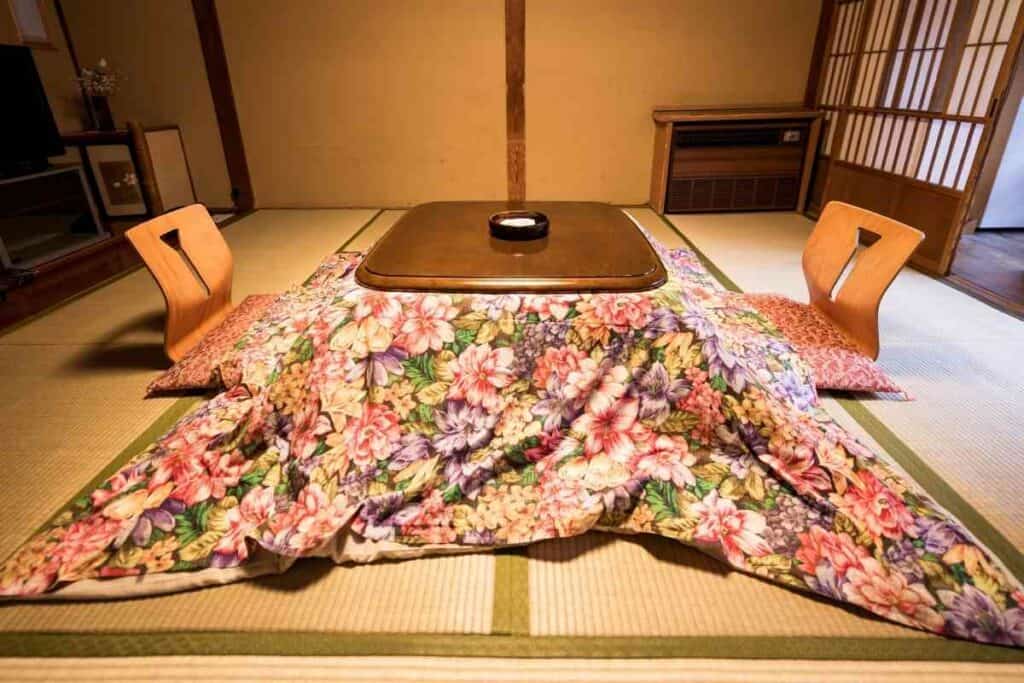
This was an early ancestor to the kotatsu tables we see nowadays and would be referred to as an hori-gotatsu:
- Hori means ‘digging’ or ‘ditch,’
- ko meant ‘fire’ or ‘torch’
- while tatsu meant ‘foot warmer.’
During the 17th century and the Edo period, many Japanese people began digging out the ground below their irori so they could have a place to put the burning charcoal, which was covered by a grate.
The more modern, moveable kotatsu came later. People started putting the charcoal in an earthenware pot to make it transportable.
By the mid-20th century, electricity replaced charcoal as the heat source. The moveable earthenware pot was replaced by an electric heater attached to the underside of the table.
Before the turn of the 21st century, around 4/5 of Japanese homes were equipped with a kotatsu.
Kotatsu use in Japan
During winter, the kotatsu is often the center of the home.
Since Japanese homes are usually not as well insulated as Western homes, the kotatsu sees a lot of use when it’s cold.
Aside from eating, watching TV, and studying, people often nap under the kotatsu – and family pets particularly like this too.
Zen tables
Zen tables are individual, low-level tables. They’re used as a place to drink tea, study, or eat dinner.
Japanese tea tables
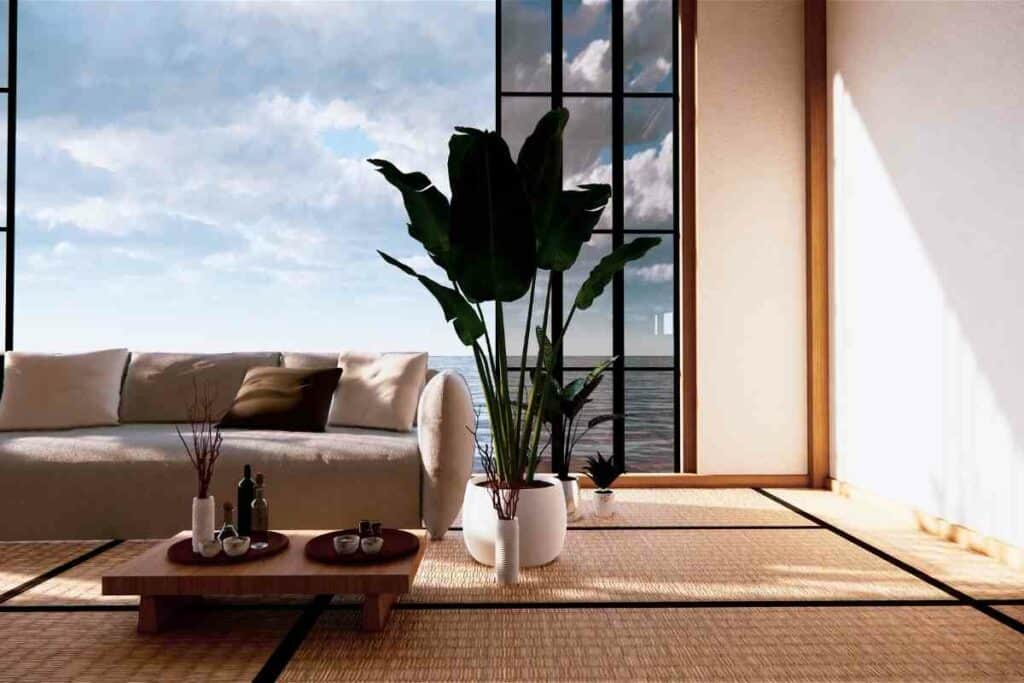
Tea tables are almost as important as tea in Japan.
There are lots of different styles of tea tables, but most are small, low to the ground, and made of wood.
They’re usually big enough to sit two people (on the floor, of course) opposite each other.
Japanese tables in restaurants and bars
You’ll find all sorts of seating arrangements in Japanese restaurants and bars.
Kaunta seki
Kaunta seki is bar seating or counter seating.
You’ll find these in lots of informal eating places like:
- ramen
- gyudon (beef bowl places)
- izayaka (Japanese gastropubs)
- bars
- and noodle shops
In high-class establishments, they often also have kaunta seki to make the atmosphere more informal.
There is a style of dining originiating in Osaka called kappo.
With this, the chef will prepare your food in front of you while you sit at the counter.
You get to see their cooking techniques and impressive knife skills.
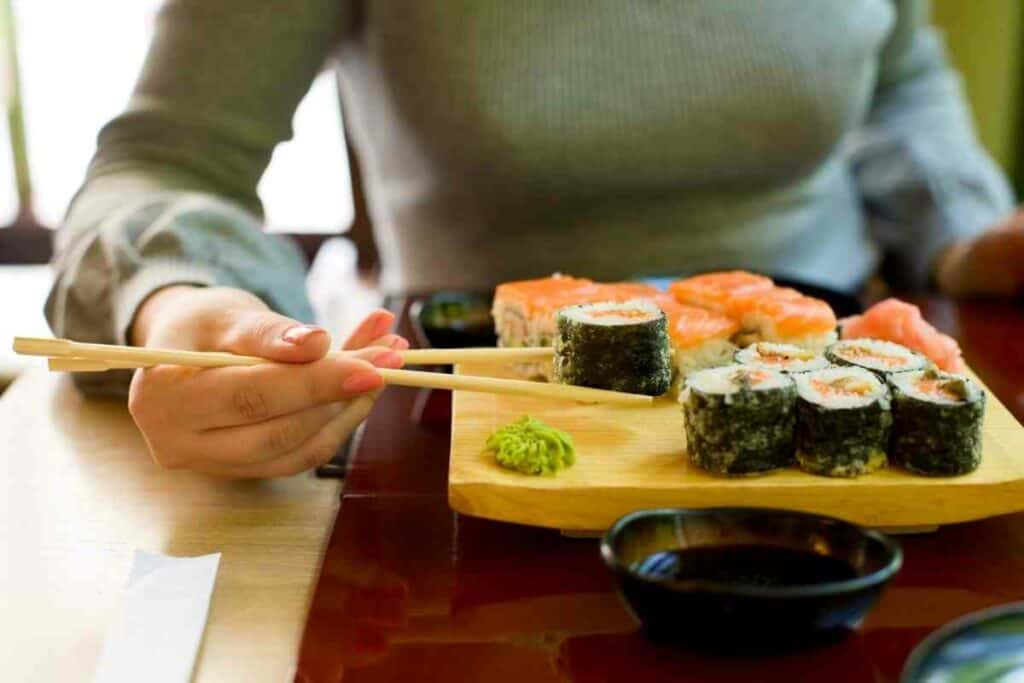
If you’re eating in a fast-food restaurant that uses kaunta seki, you’ll usually buy your meal from a ticket machine outside and hand your ticket to the staff who will seat you at the counter.
Zashiki (tatami seating)
Traditional restaurants will use tatami mats and low tables.
You’ll be required to remove shoes before stepping onto the tatami mats and the Japanese custom is to turn your shows to face them away from the tatami.
Horiqotatsu
Horigotatsu are another type of traditional Japanese tables.
They are low to the ground but have a recessed floor beneath them so that people are able to sit with stretched legs.
Essentially, this is a way for people to sit in a tatami space but in a Western-style way. You’ll often see this type of table for group dining.
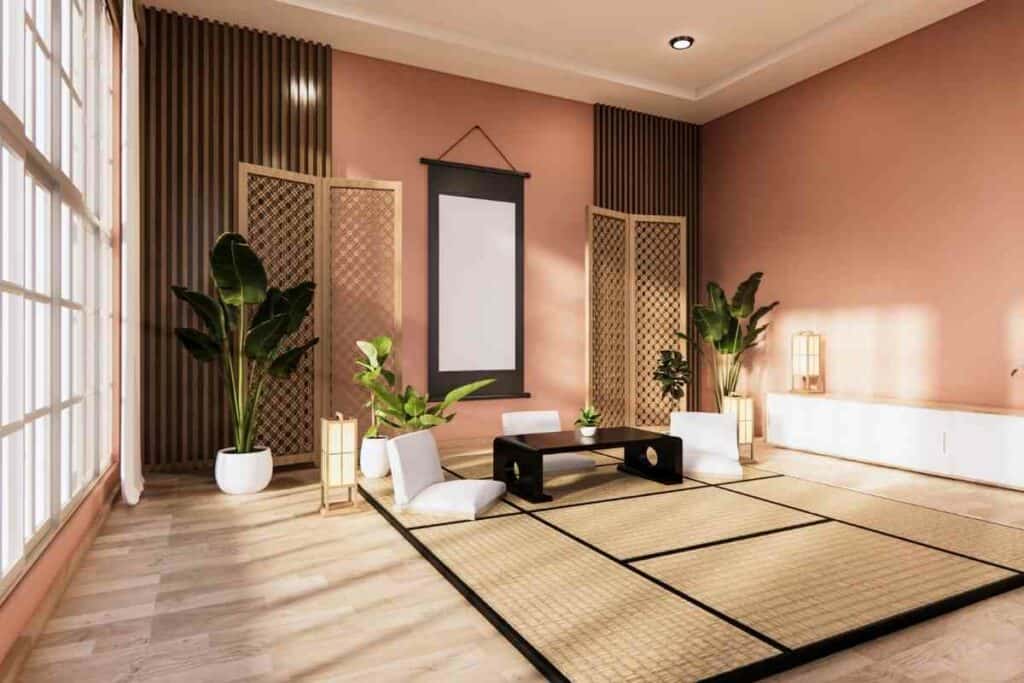
It’s believed that an art teacher and studio potter from Britain, Bernard Leach, created the design for these tables.
Apparently – He was too tall to use a kotatsu table comfortably and so dug deep enough under to be able to get his legs to dangle inside. Leach spent lots of his life in Japan, having been born in Hong Kong.
Teburu seki (table seating)
Nowadays, it’s common to find Western-style tables in restaurants.
Some restaurants have large tables that you’ll share with other diners.
If this is the case, you should greet them before you sit.
Booth seats
Thanks to the influence of the West, you’ll often find booth seating with benches on each side of a table instead of chairs.
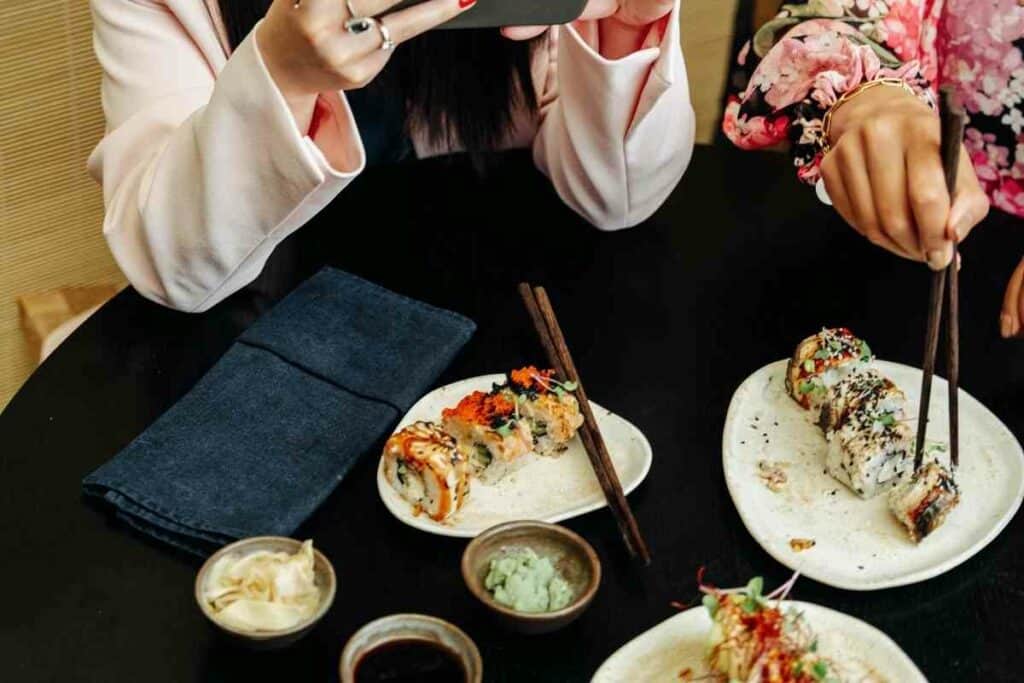
You’re most likely to find these in casual restaurants like:
- family restaurants
- curry shops
- or izakaya
Some ramen establishments also offer this type of seating so that diners aren’t hesitant or reserved when slurping their noodles!
Also read
Kotatsu seating
Just like in the home, you can find kotatsu tables in Japanese restaurants too but they’re quite rare, which makes them an attraction in itself.
Final thoughts on Japanese tables
Hopefully, you’ll now be familiar with all of the different Japanese tables that exist.
If you are visiting Japan, be sure to check out restaurants offering traditional seating arrangements as this is a real experience.
Don’t be surprised, though, if you visit a Japanese person’s home and find a Western-style high table!
More and more people are adopting these and letting go of the traditional low-level tables.
In Case You Missed It
- 7 Best Japanese Sunscreen Products You Can Buy Online
- 5 Best Japanese Makeup Brushes for a Flawless Finish
- 7 Benefits Of Tatami Mats You Should Know
- The Best Furoshiki Wrapping Cloths: Inspiration, Ideas & Cloths You Can Buy
- Cool Tenugui Towels (10 Best Ones with Bold Japanese designs)
- Japanese Yukata Ideas & Inspiration (20 Creative Ideas)



